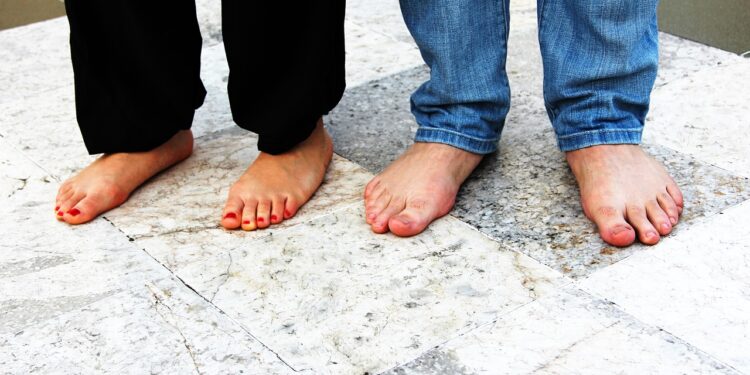Going about your day and then stomping your toe at the edge of a table or a wall can be really distorting. At first you might think it’s just a small discomfort.
However, this can get worse when the toenail starts to dig into the surrounding skin. This condition is what is known as an ingrown toenail.
Typically, ingrown toenails affect teenagers and adults, especially people who put on very tight shoes that put pressure on their toenails. Also those who play sports and get their legs or toes stomped on constantly. In this article, we are going to look at different ways that you can treat and prevent ingrown toenails.

Treatment For Ingrown Toenails
Home Remedy: This is the first treatment people usually opt for whenever they notice an ingrown toenail. Soaking your foot in warm, soapy water for about 15 to 20 minutes, a few times a day, can help reduce the swelling.
After soaking, gently lift the edge of the nail from the skin with a pedicure tool. If you don’t have one at home, that’s fine. Use a small piece of cotton or dental floss to lift the toenail from the skin. This separation will stop the toenail from digging further into the skin.
Medication: Painkillers like ibuprofen or acetaminophen, and antiseptic creams can help you ease the pain in that region, almost instantly, and prevent infection.
Medical Treatment: This treatment option is used in cases where home remedies, and medications don’t work. At the hospital, the doctor might do a small procedure to trim the ingrown part of the nail. However if the ingrown toenail is severe, in a case where the surrounding skin has formed a pocket of pus underneath the skin, the doctors will likely drain it to get rid of the pus and infection.
Surgical Procedures: Some ingrown toenails are stubborn and recurring. If you have a stubborn or recurring ingrown toenail, the doctor will recommend a procedure called matrixectomy. This procedure would remove part or all of the nail roots so that the troublesome nail won’t grow back.
How Can An Ingrown Toenail Be Prevented?
Firstly, cut your nails in such a way that they are cut straight across instead of rounding the edges or cutting them too short. Always make sure your shoes aren’t too tight or narrow. The shoes you wear on a daily basis should have enough space for each toe to rest on the sole individually, without being cramped.
Additionally, make conscious efforts to stop stomping your feet or dropping things on them. Lastly, if you are having persistent pain, swelling, or signs of infections around your toenail area, visit the doctor.
Bottom Line
Ingrown toenails could start out as small as an annoyance, but they can become bigger problems if ignored. Firstly, you can try soaking your feet and gently lifting the nail at home, and use painkillers or antiseptic creams if needed. If it doesn’t get better, go see a doctor. However, for stubborn cases, there’s a procedure called a matrixectomy that can help with ingrown toenails.

















